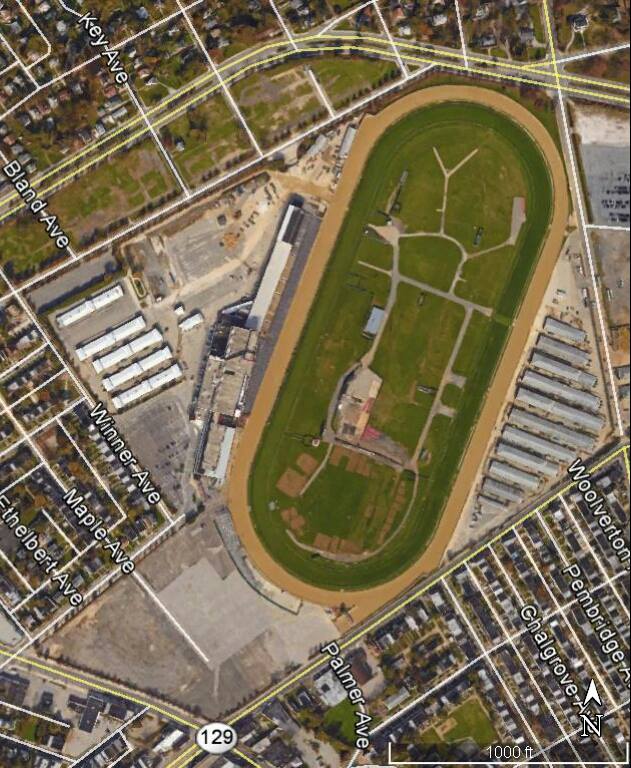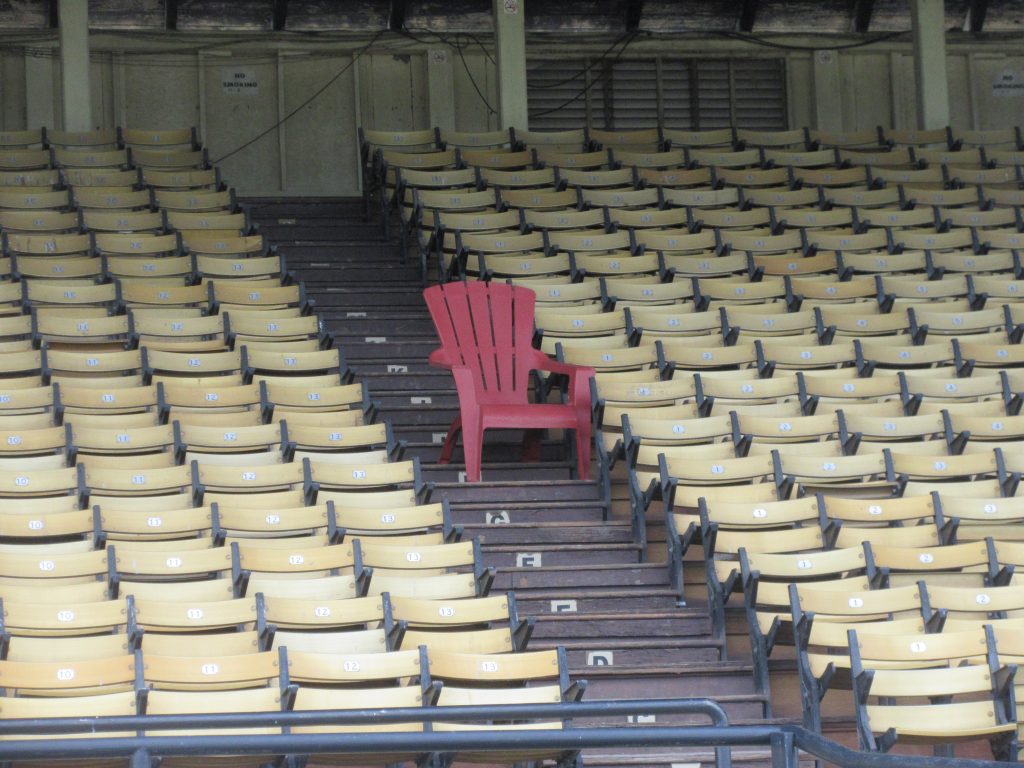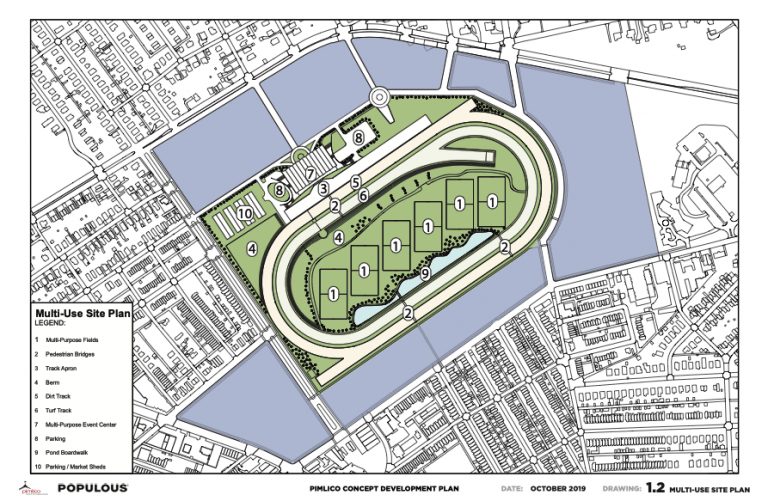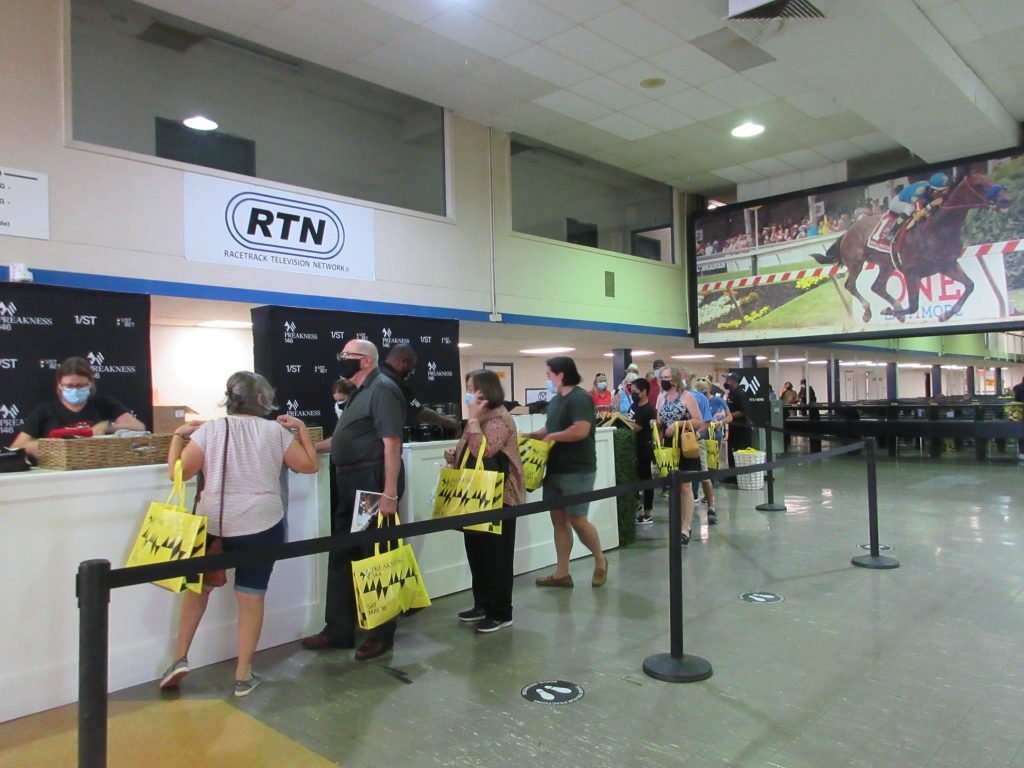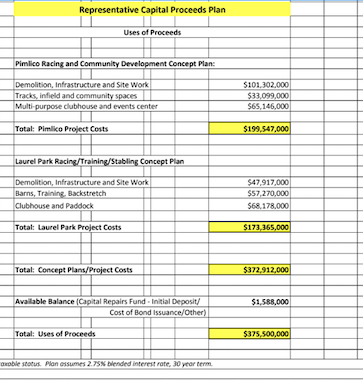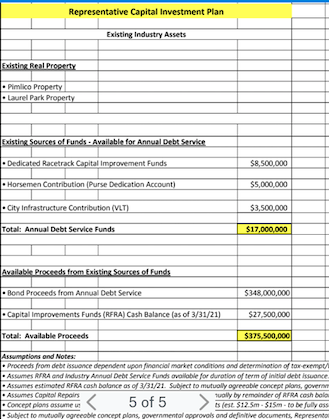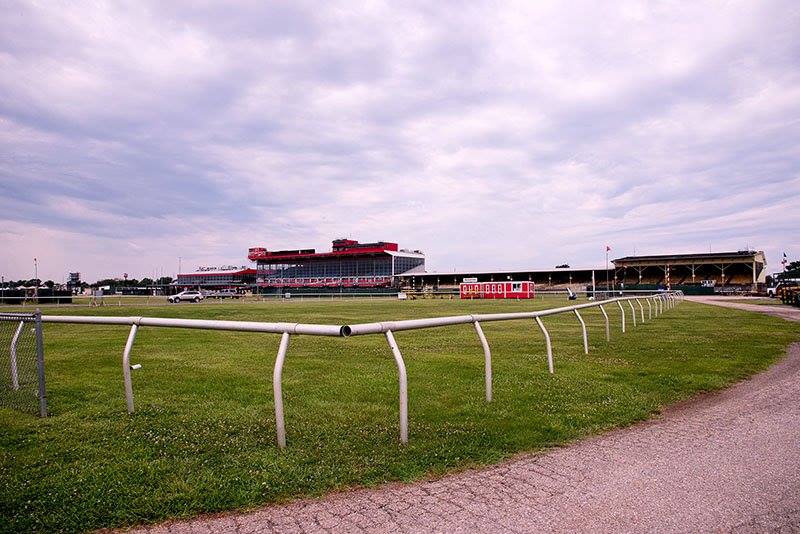
Opinion/Editorial
Does the City of Baltimore really want to save Pimlico?
Marylou Whitney saved Saratoga. Who will save Pimlico?
The new plans presented two years ago were sold to the public as saving Pimlico and keeping the Preakness in Baltimore. So far, the Preakness is still here as is Pimlico but for how long? How much will the community, Baltimore, Maryland and horseracing lose if Pimlico is severely altered? Or ceases to exist?
Arlington is no more. Suffolk Downs shuttered. Hollywood Park now a football stadium. Hialeah, on the National Historic Register, no longer has Thoroughbred racing. All historic tracks that have seen great races. But none a Triple Crown track.
Maryland once had eleven one mile and half-mile Thoroughbred racetracks including Bowie, Havre de Grace, Hagerstown, Marlboro and Bel Air. All gone. Maryland has only had one Triple Crown track that opened in 1870 and introduced the second leg of the American Spring Classic in 1873.
Baltimore City was once the toast of professional sports. The Baltimore Colts and Baltimore Orioles played at Memorial Stadium. The Baltimore Bullets and Baltimore Clippers played at the Civic Center. And every spring every Baltimorean was at the Old Hilltop the third Saturday in May for the Preakness.
The Colts snuck out of town in the middle of the night in a snowstorm, the Orioles moved to Camden Yards, a project funded with bonds and managed by the Maryland Stadium Authority. Oriole Park at Camden Yard became a standard for new ballparks around the country.
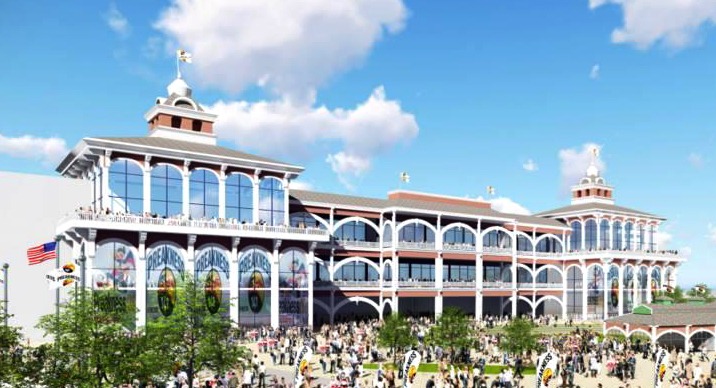
Baltimore City cannot afford to lose another landmark and piece of its history. Or another sport or employer.
Pimlico is a working training center with trainers, owners, exercise riders, grooms, hotwalkers, farriers, veterinarians as well as all kinds of people around the facility such as a full working kitchen, food service and maintenance. Many have worked at Pimlico for generations. Many are from the surrounding community and/or live in the dorms at Pimlico. Not only will jobs be lost but housing will be lost as well.
On Friday, Sept. 30, the Maryland Stadium Authority (MSA) must provide the Maryland General Assembly the first of two reports on the progress of the redevelopment of Laurel Park and Pimlico Race Course as authorized under the Racing and Community Development Act in 2020.
Don’t hold your breath about what is in this report.
There are a few issues that have arisen since the plan was conceived and the General Assembly approved the $375 in bonds. One being money. Apparently, there isn’t enough of it. Whether you blame it on inflation, Covid, lack of workforce or lack of organization or just plain greed, the project has stalled.
And they aren’t exactly sticking to the original plans. Apparently, The Stronach Group (TSG) doesn’t want to relinquish ownership of Laurel Park in order to qualify for the state-issued bonds. Plus, the funds proposed won’t cover the actual plans they have in mind for Laurel Park.
And what of Pimlico? Seems there’s not enough money there as well but the property supposedly is in the hands of the Maryland Stadium Authority. Most of the money to be spent will pay for demolition of the existing facility.
Surprisingly, the majority of the public and residents of Park Heights have no idea Pimlico will be leveled. Nor do they know of the proposed plans for the property.
The simple fact is when the existing structures at Pimlico are torn down 152 years of history will go with it. And no one either seems to know or seems to care.
Keep in mind, the Maryland Jockey Club is owned by TSG who owns the Preakness, the race, and all of its branding plus the $4 million Woodlawn Vase. For the penalty of losing their racing licenses they can take the Preakness anywhere they wish.
Friends of Pimlico is a Facebook page in May 2015 that I started as “Save Pimlico” when every Preakness there was talk of the race moving and Pimlico closing. A friend, April Inloes Smith, came on board and we began actively campaigning for Old Hilltop and its history. At April’s suggestion we became “Friends of Pimlico” and started attending meetings and posting on our page.
For seven years this page has been building in voice and numbers with over 4,000 followers on Facebook and five busy followers formed an ad hock committee contacting anyone who has an interest or a say in the historic track’s future.
It’s an uphill battle trying to keep Old Hilltop in historic fashion operating as it is—a training facility with live racing meets, barns and much more
It would be a tragedy to lose a Triple Crown facility that has hosted thirteen Triple Crown winners and two of the most important match races in racing history.
A cathedral in horse racing as important and almost as old as Saratoga is certainly worth saving. And Friends of Pimlico is set on accomplishing just that.
But the group thinks Pimlico has much more potential.
The delay in plans for whatever reasons have given the grassroots organization a bit of time to get out their message: “Pimlico has potential, and we want to keep it and fix it up.”
There is one big change that just doesn’t sit well with many people we have spoken with in the industry. Moving and rotating the historic oval. Now they did move the finish line up closer to the clubhouse for the view in 1959. When they did, they moved some of the dirt because it contained the ashes of some people who loved Pimlico.
According to Joe Kelly, Pimlico Race Course’s track historian, at least nine humans that we know of chose Pimlico as their final resting place (or partial resting place, as only some ashes were scattered).
They include Percy Longstreet Barry in 1944; Dillon Grey in 1949; Willie Doyle in 1950, who rode Effendi to victory in the 1909 Preakness; Anthony Cossentino in 1982; Bill Gillespie in 1990; Chick Lang, “Mr. Preakness.” in 2010; and, in 2015 an unkown Pimlico fan’s last request was to be placed at Pimlico which her daughter carried out.
But moving the oval in general is an idea that lacks vision and taste. Plus, it’s a track that has proven both safe and popular with trainers. Will the new track receive accredited by the NTRA Safety and Integrity Alliance? Will the Preakness retain its Grade 1 status? Will top trainers still want to bring their top horses to an unproven track? The Preakness already has issues filling the card most years.
It would be much more cost effective if they left the oval where it is and spent that money on renovating the existing structures that the first Maryland Stadium Authority said had good bones but were not up to code.
The cost of moving the track, building a new quality dirt surface and a turf track, demolition of the existing structures and stables is HUGE. The angles to focus on are The Stronach Group (TSG), the cost of the “new” Pimlico and the “new” Laurel. Saving the Historic oval is the most cost-effective route.
The cost of demolition, Infrastructure replacement and site work for Pimlico was estimated at $101,302,000 in 2020. The infrastructure definitely needs replacement. But the cost of demolition could be reduced by upgrading the existing structures.
The cost of moving, reorienting the tracks and building a turf and dirt track from scratch. Also, building an infield and community spaces were estimated to cost $33,099,000. None would be necessary if they just leave the oval where it is.
The cost of building the glass multi-purpose clubhouse and events center estimated at $65,146,000 could be spent on the upgrades to the existing structures.
At the very least $98,245,000 could be saved and used to upgrade the existing structures.
Yes, Pimlico needs improvements including electrical, plumbing, dining, stables, grooms’ quarters, enlarged paddock, green space with trees, a parking garage with multiple levels would free up asphalt and open space for green space, picnic areas etc. BUT all these valuable ideas will not become reality until the decision makers realize keeping the track will be more economical and profitable than moving the track and building the glass pavilion.
Another change is removing the barns and backstretch. Nothing in replacement.
There could be an expanded use for this area that would benefit the community, the city, and the state. An Equine Education Outreach program. Bring in new people to the sport.
Other amenities would be a Pimlico/Preakness museum to rival that of Saratoga Springs and Louisville. A theater/lecture hall would be a wonderful complement to a museum and amenity for the community.
There is a museum planned but observing the current plans it could not be too expansive.

One change that may come quickly is the demolition of the old open grandstand that was closed in 2019.
This grandstand, the last silent witness to the Match Race of the century was built in 1922 with most of the roofline lowered in 1954 for the sightline of the new grandstand that was open until 1959.
Sadly, this includes removing the old Photo Shop where photographers for decades have gathered to maintain their equipment and download photos. Although not the comfiest of accommodations if those walls could talk …
The other changes will still come slowly. Likely after the second report is release January 1, 2023. But we’re hoping they can be altered.
Even with her quirks and shortcomings the old girl still has the charm of which her city got its descriptive moniker. If you fix it, they will come. But you don’t have to tear it down.
Sean Dobbs, horse owner and President of Highlander Contracting Company, came up with an alternative site plan that includes improving and replacing existing structures.
“It’s not over to it’s over. Port Covington has changed multiple times since Plank bailed on it. Not to mention there is now a potential risk of the Orioles being sold at some point in the future. The city needs Pimlico. The daily handle is always bigger than the daily handle at Laurel. That strictly based on Pimlico being recognized worldwide for thoroughbred racing”, said Dobbs.
“Laurel will not hold up and Maryland Horsemen will pay the price. The more development NW of Ellicott City causes more rainwater into the streams down river which ultimately effects ground conditions under Laurel.”
Laurel is to be the year-round racing epicenter. Both the main training center and only live racing facility.
The proposal earmarks Laurel Park to get a new dirt track with a new turf track and a tappet track sandwiched between.
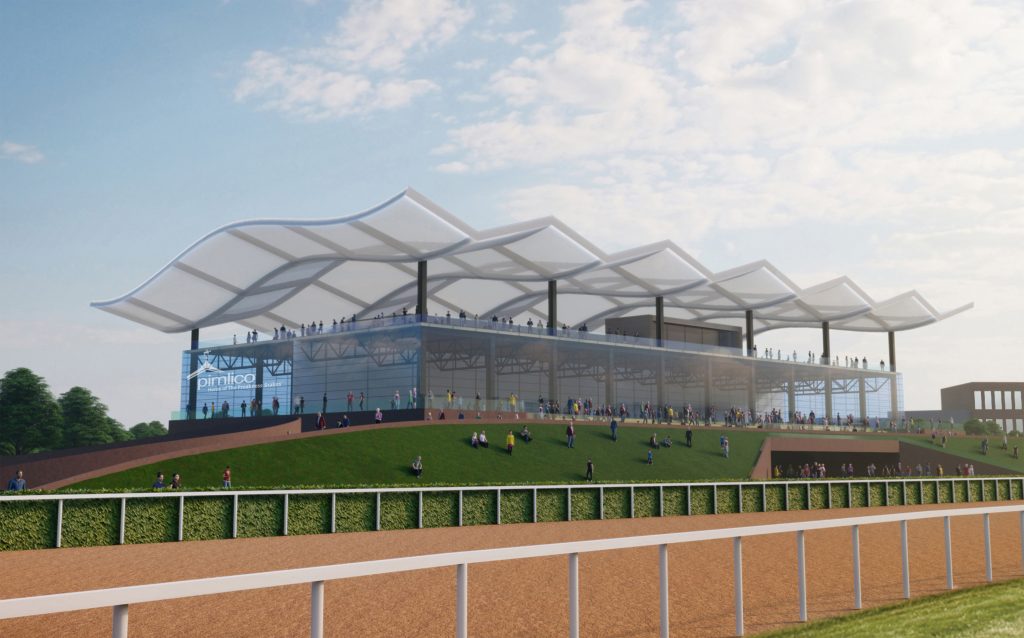
Laurel has had multiple issues with the dirt track including two recent episodes where the track was closed in 2021 and 2022 and racing was moved to Pimlico.
The land on which Laurel sits is wetlands and the continued build up of water, flooding and underground streams continues to created problems on the environmentally sensitive property. Further development may create even more issues.
Can Laurel support being the only training facility in Maryland if Pimlico closes for training? There will be hundreds of horses that will have to stable at Laurel or find private accommodations at stables like Fair Hill.
Pimlico will have limited development for racing with the otter acreage prepared with infrastructure to be sold or leased for commercial development.
Part of the commercial development was included in MSA study phase two. A parking garage and hotel. We’ll take it. Also planned is a grocery story. Good amenity for the community. Multi-use housing. What for? There are dozens of abandoned houses and empty lots surrounding Pimlico. Spend the money to renovate and rebuild into the community.
Pimlico has a truncated Preakness meet but the past few years it has hosted a brief late summer/fall meet that has proved extremely popular with fans and trainers.
In 2021, Pimlico had a very successful summer meet. Saturday, August 21, the sky was blue over Pimlico Race Course and on last weekend of live racing, the Maryland Jockey Club (MJC) rolled out the green carpet and the stakes races for patrons for “Maryland Pride Day.” And they rolled out the perks for “Fan Appreciation Day” the minute you walked in the door with free programs and bags full of Preakness swag.
Pimlico’s apron and rail are level with the track, so you are right where the racing action happens. And there was plenty of racing action as it was also “Maryland Pride Day” with a 10-race Maryland Pride Day program including four $75,000 stakes restricted to Maryland-bred/sired horses: The Miss Disco, the 28th running of the Star de Naskra and a pair of 1 1/16-mile turf stakes, the Find and All Brandy.
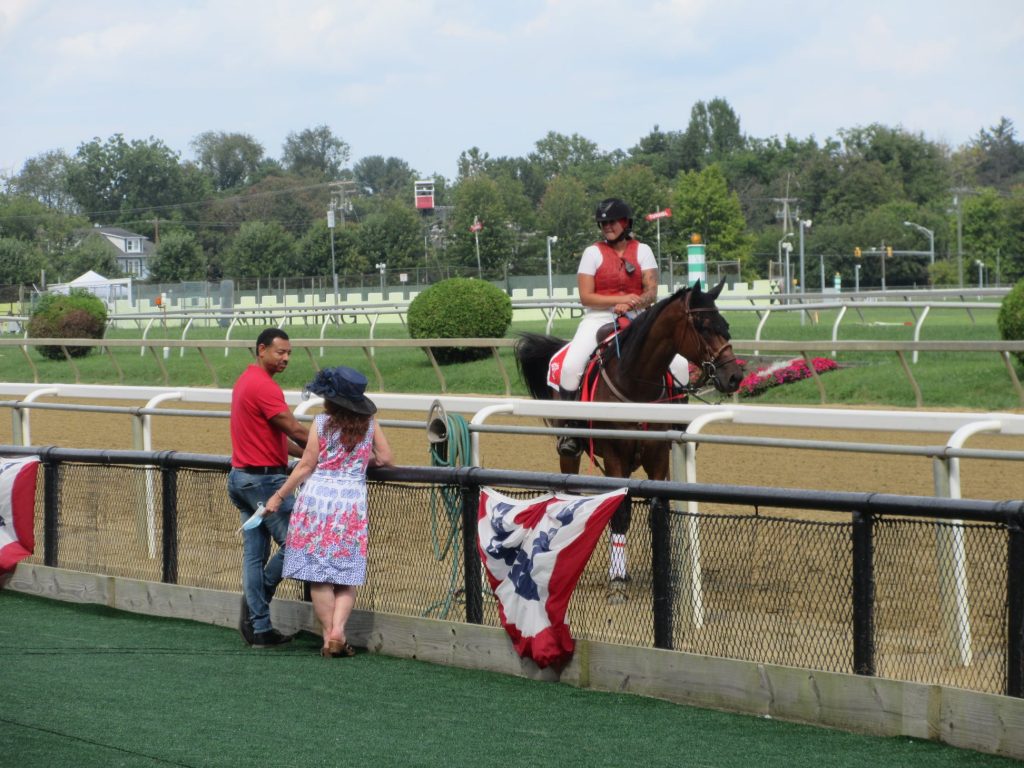
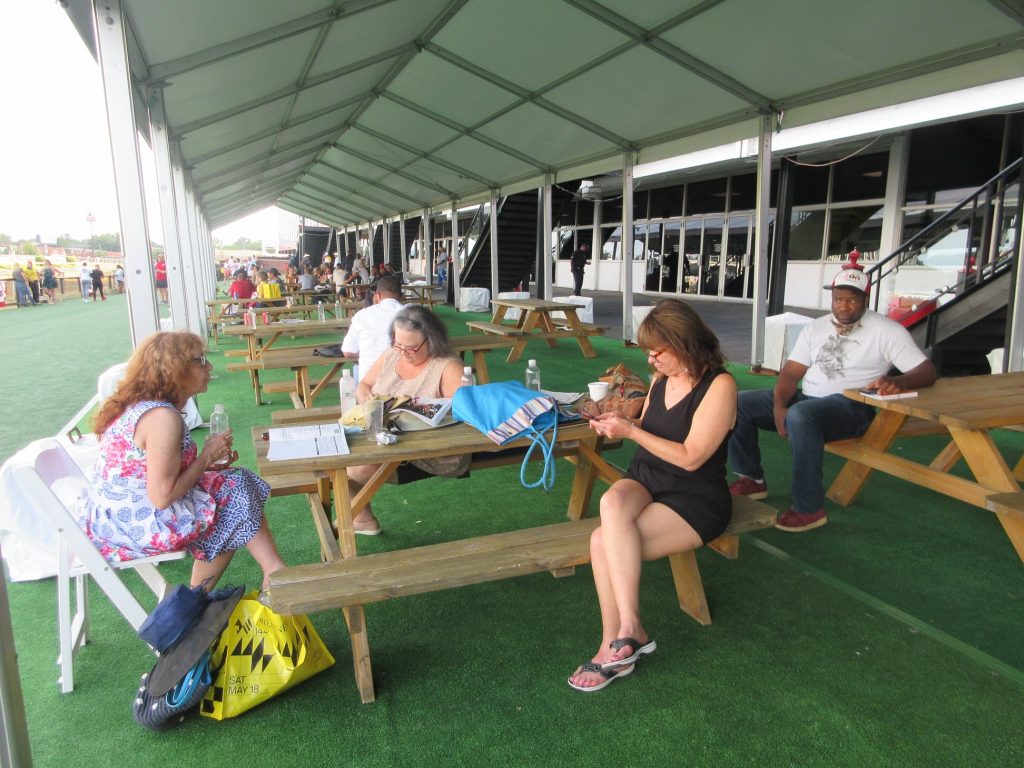
| Pimlico Race Course |
| Sunday, Sept. 25 |
| Race Totals |
| 1. $75,119 |
| 2. 72,796 |
| 3. 70,254 |
| 4. 76,929 |
| 5. 72,318 |
| 6. 107,815 |
| 7. 76,342 |
| 8. 59,729 |
| 9. 96,694 |
| 10. 99,737 |
| 11. 81,295 |
This year, Pimlico meet dates were moved to accommodate work being done on Laurel Park’s dirt track. This gave Pimlico two weekends of stakes races, full fields, top trainers, big crowds and high handle. If you have it, they will come.
The Fall Stakes Festival that moved to Pimlico started Sat. Sept. 10 with four stakes totaling $475,000 in purses. The G3 BWI International Cup, $100K Lite the Fuse, $100K All Along (L) and the $75K Shine Again.
On Sept. 24 Pimlico hosted three #100,000 stakes. The Sensible Lady Turf Dash, Laurel Dash, the Polynesian and Weather Vane.
The Polynesian, named after Native Dancer’s sire, was won by local stable Wasabi Ventures Racing’s Benevengo.
“The WPS totals from Sunday, the last day of live racing (personally, in my experience, wagering totals are dank especially after a day of stakes races). These totals are per race around 20-30 grand higher on average than what I am used to seeing,” said Friend of Pimlico Marilyn Bobby.
“Will the public support Pimlico? I think so from these numbers.”
A recap of the Plans for Pimlico and Laurel which are tied together in the 2020 law
Under the agreement, TSG would sign a 30-year lease deal to hold the Preakness at Pimlico, two months for set up and breakdown and pay $10 million a year for overlay for Preakness seating and accommodations such as temporary barns and hospitality.
The legislation requests $180 million for Pimlico, opened in 1870, and $155 million for Laurel Park, opened in 1911, to raise and rebuild both facilities from the ground up. Funding will be in the form of bonds sold through the Maryland Stadium Authority, monies from the Lottery and slots through the Racetrack Facility Renewal Account (RFRA). The bonds are required to be paid within 30 years.
All of Laurel’s 193 acres will be dedicated to development related to the track. There will be a modern, state-of-the-art grandstand built with all new barns and backstretch. In addition, there will be a new MARC train station built and bridges connecting the racetrack facility to the new TSG-owned Laurel Park Station multi-use development on the other side of the station. Click here to view the Laurel Concept Plans
Only half of Pimlico’s 110 acres (actually 20 acres) will be related to the racing facility with the remaining surrounding acreage leased or sold for commercial development. Proposed are multi-use housing, a hotel and parking garage for use by Sinai Hospital and a grocery store. The current clubhouse built in 1960 and grandstand built in 1922, 1954 and 1959, will be replaced with a glass civic center/clubhouse. The racing oval will be rotated 30 degrees and shortened to 15/16th of a mile with two chutes. Scratch that, it will be a one-mile track. The infield will contain multiple athletic fields, a pond and footbridge. Click here to view the Pimlico Concept Plans
TSG is seeking $389 million for rebuilding both facilities. The legislation would allow up to $375 million worth of bonds to be issued for the projects, though racing officials believe they may need to use only about $348 million in bonds.
The Maryland Stadium Authority would borrow money upfront to pay for most of the work, in the form of bonds that would be sold on the market. Those bonds would be paid back over 30 years using $17 million per year from the Maryland Lottery.
The lottery would be replenished from three sources (slots money, slots money, slots money):
– $5 million annually in money from slot money from the Purse Dedication Account (PDA) referred to as the “horsemen’s contribution.”
– $3.5 million annually in slots money that had been going to community aid in Baltimore.
– $8.5 million annually from the slots-funded Racetrack Facility Renewal Account (RFRA), money that had been set aside for facility capital improvements (due to sunset in 2035).
– The project also would use about $24 million that will be built up and sitting in the Racetrack Facility Renewal Account by March 2021 and $17 million in a one-time payout from the Maryland lottery.
Under Maryland law, the state’s horsemen receive subsidies from slots to supplement purses (PDA), while The Stronach Group receives grants from slots revenues to fund capital improvements (RFRA), as long as plans are submitted beforehand, all terms and deadlines are met, and those funds are matched by the company. The proposal would allow those subsidies to be used to underwrite the bonds, which would have a 30-year maturation. That would require a change in existing state law, which guarantees the slots subsidies through the end of 2035, covering less than half of the 30-year term of the proposed bond.
The plan also calls for a break on the sales tax for construction equipment and other materials that will be used in redeveloping of both facilities. Lawmakers have approved a similar sales tax exemption for other large projects in the state.
For more information on the plans for Pimlico and Laurel and a breakdown of cost click on my story.
Stay tuned for updates and news of the report release on Sept. 30.
UPDATED 9/27/2022 9:08 PM ET



